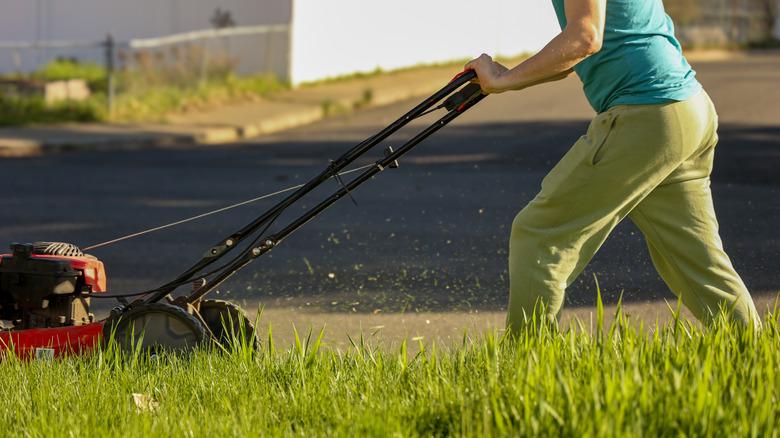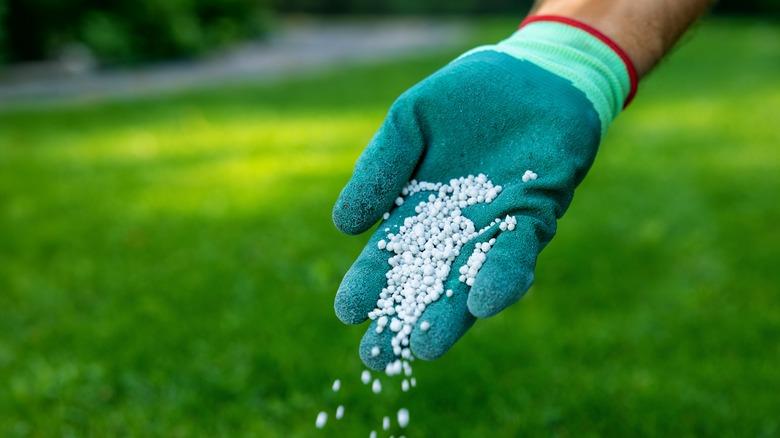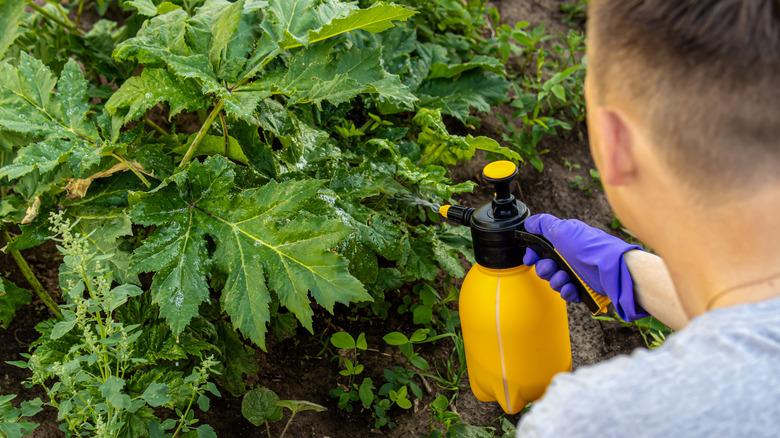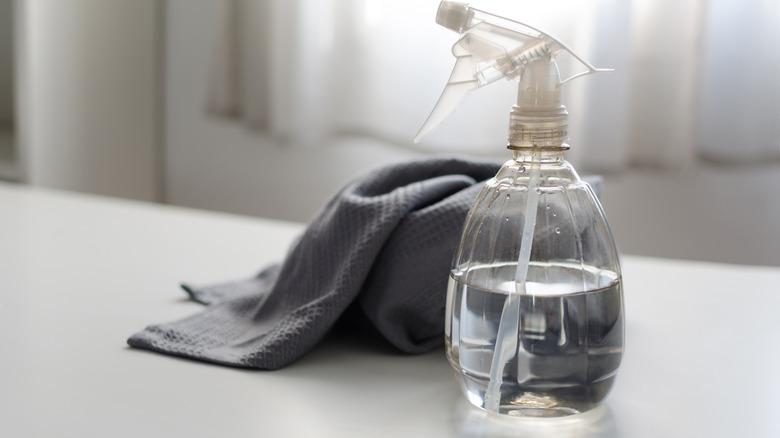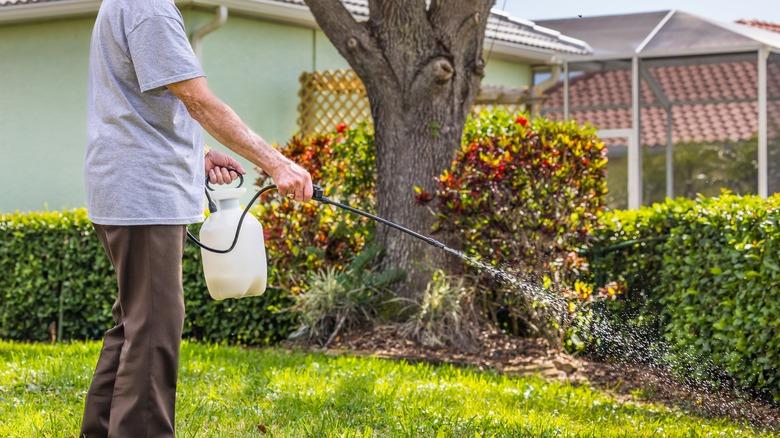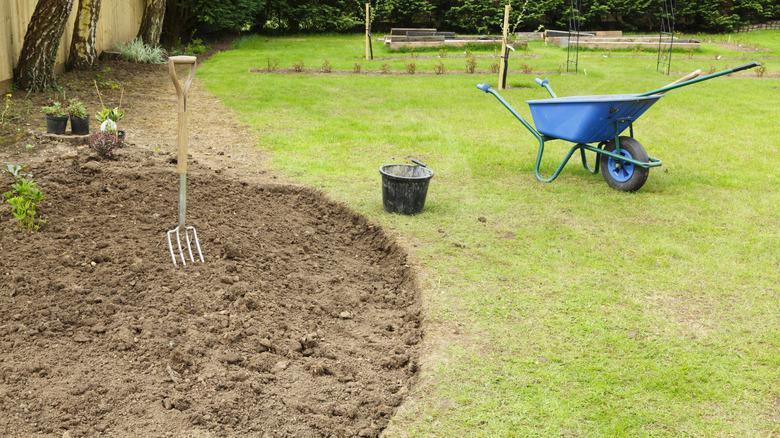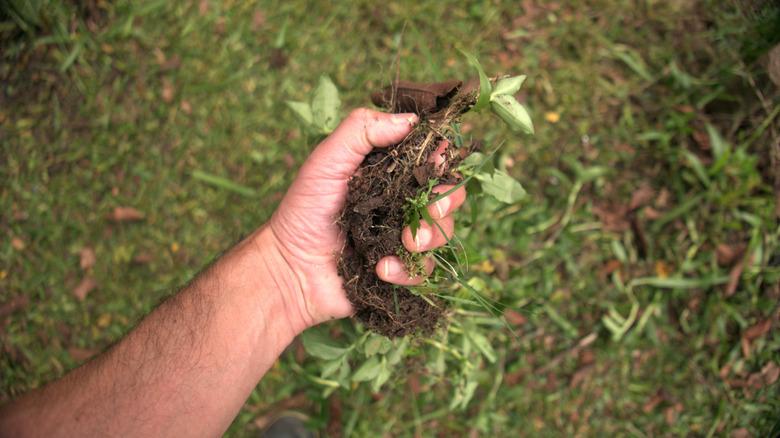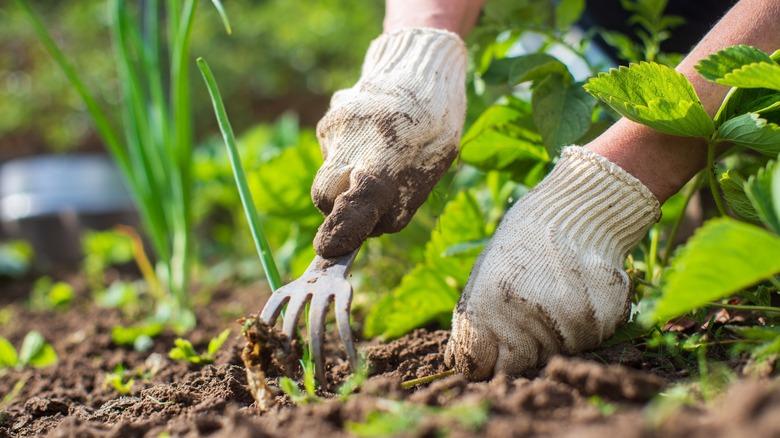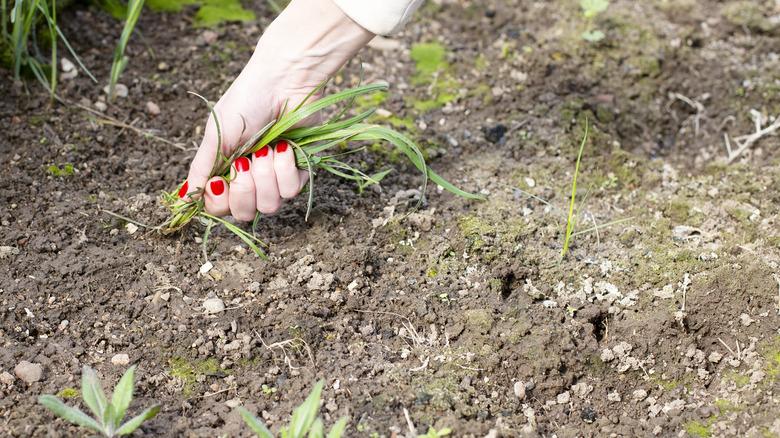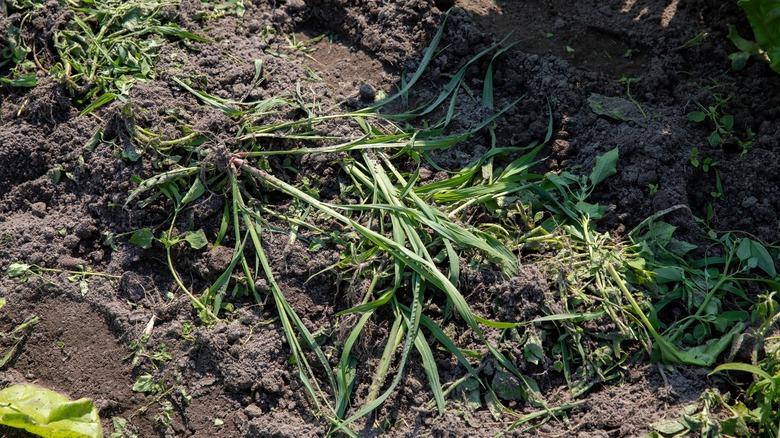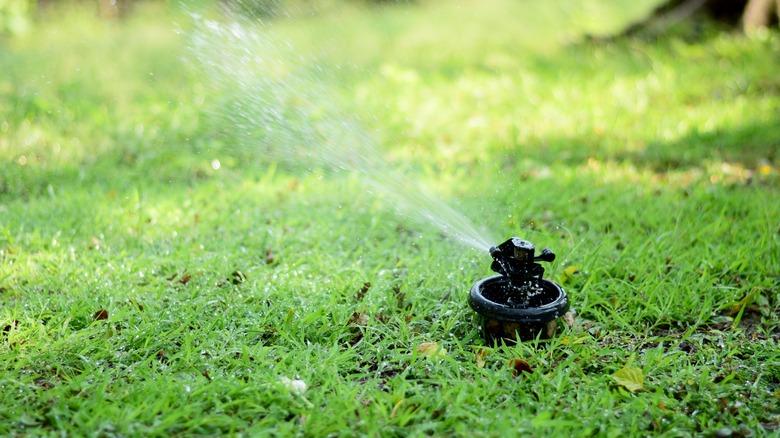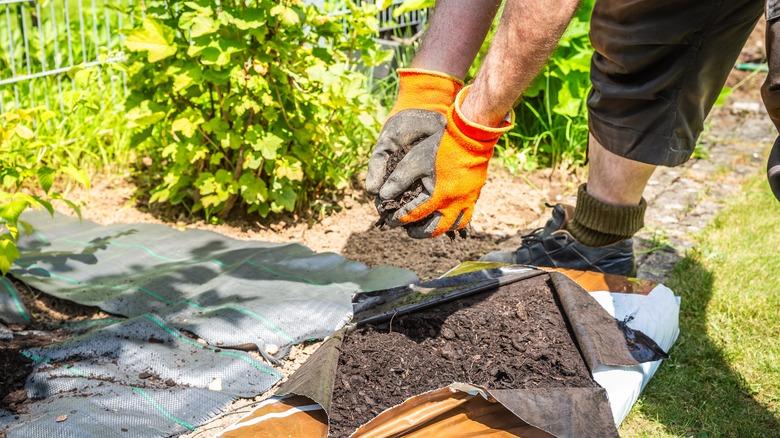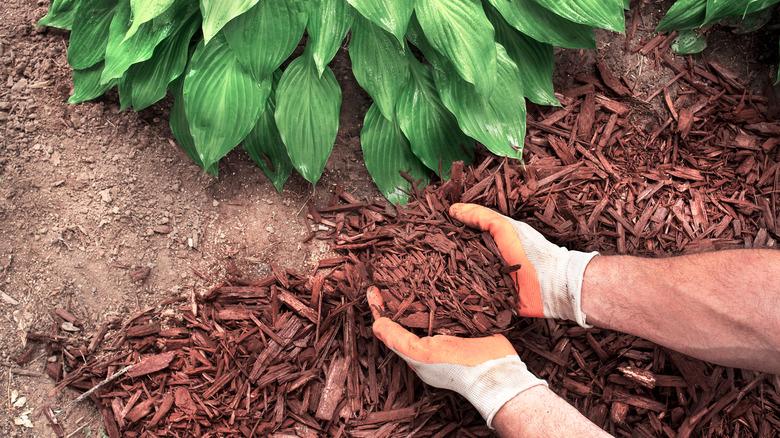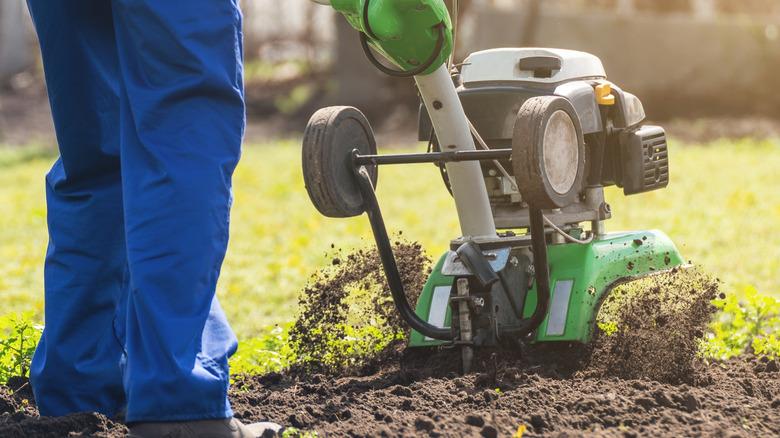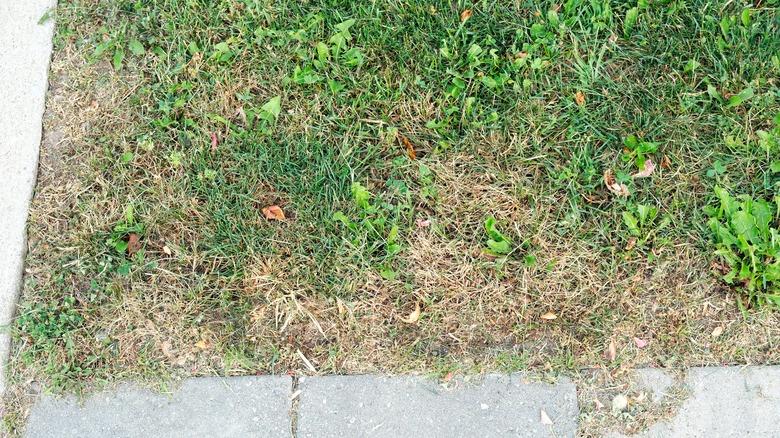Common Mistakes To Avoid When Trying To Kill Weeds In Your Yard And Garden
Having a lawn, garden, or both can be a rewarding experience. To help them look and grow their best, though, these spaces require a lot of work and upkeep, including weed management. Knowing the most common types of lawn weeds is important to tackle these issues. Unfortunately, weeds can take over a yard and garden without proper care. The quicker you can kill weeds, the less likely they are to spread and cause further damage.
Weed control is also important to the overall aesthetics of your lawn and garden, and managing these unwanted plants can also help improve the growth of other plants you're trying to keep. Unfortunately, even the best intentions can lead to seemingly simple mistakes when trying to kill weeds, which may then cause even more problems. Whether you currently have a weed problem in your yard, or you're trying to come up with a plan before planting a garden, knowing the most common weed control mistakes ahead of time can help you better prepare so you can keep your outdoor spaces in their best condition possible.
Not mowing your lawn so short
Mowing your lawn is undoubtedly one of the best ways to keep your grass in good health. It turns out that this is also a key method to help prevent weeds from growing in your yard, too. So if you don't have a regular lawn care schedule yet, now's the time to put one together. Following the right lawn mowing tips can injure existing weeds and will help prevent them from competing with your grass and from taking over your lawn.
Exact guidelines depend on the type of grass you have, and the time of year. However, Pennsylvania State University Extension reports that letting your grass grow up to 3 inches taller in the summer months can help prevent weeds from getting sunlight. Also, be sure to stick with a regular mowing routine even if your yard already has some weeds. While you might be afraid of spreading weeds further, mowing your lawn will still help eradicate the problem by disrupting the growth and spread of these weeds. Also, the healthier your grass is, the more likely your lawn may be able to keep weeds in check on its own.
Skipping out on fertilizer
Cutting your grass on a regular basis is just one way to ensure a healthy lawn and to support weed management. It turns out there are other important ways you can support grass to give it an upper hand over weeds, too. If you're mowing your lawn at least once a week and nothing else, it could be worth considering adding fertilizer to your routine.
Fertilizer can be a key source of nutrients for your lawn. It may also help your grass grow stronger against pests and drought. Fertilizer doesn't kill weeds directly, but it does help to ensure thick, healthy grass that can crowd out potential weed growth. The thicker your grass, the more challenging it will be for weeds to thrive in your yard. There are also some rules for how and when to fertilize your lawn to consider. Fertilizer is typically applied in the spring and summer, but this can also depend on your local laws.
Using the incorrect types of herbicides
If you continue to have weeds that pop up in your yard, you might consider commercial weed killers. Also known as herbicides, these products help eliminate or prevent weeds with certain chemicals. Knowing whether you want weed prevention or elimination is the key to determining the right product. Unfortunately, it's a common mistake to apply the wrong type of herbicide to weeds at the incorrect stages or time of the year. Doing so can ultimately leave your yard and garden unprotected against weeds during peak season.
First, it's important to learn the differences between pre-emergent or post-emergent herbicides. Pre-emergent herbicides are designed to prevent weeds from germinating from seed. As such, these are best applied in early spring and early fall for seasonal weeds. Post-emergent herbicides, on the other hand, are meant to be applied to weeds after they have already emerged from the ground. These can take up to 48 hours to fully absorb and kill weeds, so it is important to not mow your lawn during this time. Be sure to follow all product instructions for both of these types of herbicides before use in your yard, as well as the specific weeds each product targets.
Relying on natural herbicides that may not work
Chemical-based commercial herbicides can safely work when applied as directed, but many have reservations about using these products. If you'd rather avoid chemical weed killers, you might be curious about trying natural methods instead. Examples include essential oils to kill weed foliage, such as clove, and even white vinegar or soap. Such methods are indeed greener, but they do not address the root causes of weed growth. Instead, they might offer temporary control of foliage until the roots produce new sprouts.
While you might cautiously try natural herbicides around your yard, it's important to understand these are not guaranteed to work. They are especially not appropriate for widespread weed issues. It's also important to be wary of commercial herbicides marketed as "natural," as these may not have been studied for effectiveness. Furthermore, some natural ingredients, such as vinegar, can still carry safety concerns such as fumes and skin burns. If you do decide to use a DIY herbicide or a commercial weed killer with natural ingredients, be sure to apply the product to weeds when they are small, and repeat as necessary.
Using weed killer incorrectly
You can still hire professional yard companies to apply weed killer for you, but the wide availability of herbicides on the market has made it possible to use these products at a fraction of the cost. The catch is that unless you have professional lawn care experience, you should do your homework and use these herbicides correctly. Some of the biggest mistakes involve applying weed killers incorrectly, and subsequently decreasing the efficacy of the products while raising safety concerns, too.
Aside from consulting the product's instructions, there are a few basic rules for using commercial herbicides. This includes wearing safety equipment, such as gloves, face masks, and eye protection. You should also avoid using these products on rainy or windy days, and you should never apply too much at a time. Also, herbicides are off-limits in vegetable gardens. You will need to pull weeds by hand instead. Keep herbicides stored safely away from children and pets, and ideally in a place that is dry and not exposed to freezing temperatures.
Applying the wrong herbicides to bare soil
If you have a spot of bare soil around your home, it can be tempting to apply any post-emergent herbicide to prevent weeds. While this sounds good in theory, you may not get the results you're looking for. Applying these to bare soil will not be effective, as they need existing weeds or seeds to work properly. What's more, you should not apply chemical weed killers to bare soil if you're getting ready to plant any seeds (including grass), as the products can prevent these types of plants from germinating, too.
Instead, remember the differences between pre- and post-emergent weed killers and use them in the appropriate situations. As such, you will want to only use pre-emergent herbicides if you're looking for chemical control in bare soil. It's also important to remember that usually different types of herbicides only work for certain weed varieties. Another option consists of weed killers called "bare-ground herbicides" that are designed for these purposes. However, such products are generally discouraged due to long-term resistance and ecosystem disruption.
Hand-pulling weeds by their tops only
You don't always have to use herbicides, especially if you have just a handful of weeds in your yard. One safe and natural weed control method is to remove them by hand as soon as you see them. Doing so helps prevent the weeds from spreading any further throughout your yard or garden. This method is especially effective against very aggressive annual weeds, you might not want in your outdoor spaces, including dandelions, Bermuda grass, and spotted spurge. If you only remove weeds by their tops, though, you will surely see weeds propagate further.
Removing the entire weed (including its roots) may help reduce the chance of the plant spreading or growing back. To prevent this common mistake in physical weed control, you must remove the roots of the weeds every time you try to pull them out of the ground. For the best results, implement this strategy while the weeds are still young and before they have seeded.
Not using tools when needed
Pulling weeds by hand is a go-to practice. While certainly effective for smaller weeds and quantities, it's not a fit for larger weed problems. Skipping out on gardening tools that address weeds can cause more work in the long-run when pulling these pesky plants out by hand doesn't work. Weeding tools are must-haves for of widespread weeds, larger gardens and beds, mature weeds, or when you are unable to pull the entire roots out by hand.
When shopping for essentials on a garden tools list, you'll see there are a surprisingly wide range of options to choose from. The key to making the right tools are chosen is to consider the types of weeds and their location in your yard or garden. For example, a hand cutter can help you chop tall weeds to ground level so you can pull the roots out easily, while a digging knife can address stubborn roots that will not budge by hand. Some of the options for larger garden beds include digging forks, hoes, and cultivators.
Failing to wear gardening gloves
When you're outside, it's a good idea to address weeds as soon as you spot them. This doesn't mean you should grab them by your bare hands, though. Pulling weeds in this manner is a common mistake and can have consequences to your health. Not only do gloves protect your hands from cuts, but they can also help prevent soil-based diseases that can cause infections in any open wounds you might have. Common pathogens that might be lurking in your soil and compost include fungi, as well as bacteria such as E.coli, Clostridium tetani, and Salmonella.
As a general rule of thumb, you should always wear gloves when dealing with yard work. Even a single innocuous-looking weed should be handled with care. If you don't already have gloves, consider buying a pair to have on hand for all outdoor work. An inexpensive pair of cloth gloves can be useful for a variety of purposes while still being breathable for outdoor work. For better safety though, you might consider a thicker material such as neoprene, leather, or rubber. No matter which material you choose, make sure that any pair of gloves you have also fit correctly for comfort and overall safety.
Throwing pulled weeds on the ground
Aside from technique and tools, pulling weeds is a process that needs attention from start to finish. Unfortunately, when you're dealing with many weeds at once, you might be focused on the way you're pulling them out that you might not notice you're creating a pile of debris on the ground around you. This is a mistake that can lead to even more weed growth, thwarting all of your efforts. It's important to have a game plan that ensures the proper disposal of pulled weeds to help prevent their spread.
Once you've pulled a weed out of the ground, it's important to discard it immediately. Do not place it on the ground for later disposal or place it in an open bag. Either of these scenarios might give seeds a chance to spread. Your best bet is to place any pulled weeds in a sealed bag, so they do not have a chance to spread. Then you can place them in a trash can. This method helps contain weeds, whether you're pulling one or several out of the ground in a single session.
Accidentally watering weed seedlings
While there are certainly advantages and disadvantages of irrigation systems, these are arguably among the better ways for your lawn and plants to get enough water all year round. As tempting as it might be to set up a sprinkler system in your yard to keep both your lawn and plants healthy, there are drawbacks to consider from a weed management perspective. Broad irrigation can inevitably lead to accidentally watering weed seedlings you might not be aware of.
This doesn't mean you have to forego your irrigation system completely if you have a persistent problem with weeds. However, you might try a more targeted irrigation or drip system. This will benefit plants without providing water to weed seedlings, too. Doing so will also help conserve water, which is beneficial for both your budget and the environment, all while reducing water access for weeds. In addition to these tactics, you will still need to implement other weed control measures in both your lawn and your garden, such as hand-picking weeds as soon as you see them.
Relying on weed fabric as your sole method of control
If you're creating new landscape beds, you may have heard about the importance of weed fabric. Indeed, this can be an important step to take before you place soil, gravel, or mulch in your new garden beds. Also known as landscape fabric, weed fabric is undoubtedly one way you may be able to help minimize weeds in garden beds, but it's not 100% effective. It's also not the best choice for vegetables gardens, as it can lead to fewer soil nutrients over time.
There are pros and cons of landscape fabric, and it certainly has its place in weed management. The key is to use such weed control methods only as needed, and not around certain plants and garden vegetables that may feel the negative impacts of soil quality disruptions. Furthermore, weed fabric should not be your only method of weed control, and you cannot simply install the fabric and let your garden beds be. You will still need to monitor for weeds that may possibly grow through the fabric and address them right away. Also keep in mind that, while landscape fabric can last a couple of seasons, it will still require replacement at some point in the future. If you do use landscape fabric, be sure to use a brand with natural fibers, rather than plastic.
Not using mulch as appropriate
When planting a tree, starting a vegetable garden, or creating garden beds in your yard, you're likely focused on the plants themselves and whether you have good quality soil to support them. If you haven't considered adding mulch, you could be missing out on many other key benefits. Not only does mulch help regulate temperature soil and moisture, but it's also a more natural method of weed prevention.
There are multiple types of mulch to choose from, including wood chips, grass clippings, leaves, and pine straw. All of these can help prevent weed growth by suppressing sunlight at the surface of soil they otherwise need to thrive. You can apply the mulch of choice around a tree, in garden beds, and around individual plants as desired. However, you'll want to be careful to avoid another related mistake: depriving your soil of oxygen from over mulching, which can subsequently damage plants. You can prevent this by keeping mulch layers to 3 inches thick around plants, and up to 6 inches in garden beds. Keep in mind that an occasional weed may still find its way through even the best-layered mulching job. Pull the weed by the roots as soon as it surfaces to prevent further spread.
Tilling at the wrong time
While tilling is perhaps best known as a practice in agricultural settings, you may be able to till the soil around your home as well. It's particularly beneficial for weed management because of soil turnover that may disrupt any weeds trying to form. The problem is you can't simply till you're garden any time of the year, nor can you till an established yard. What's more, frequent tillage is thought to lead to poor soil quality overtime, and it may even contribute to erosion.
Despite all of its potential drawbacks, tillage still has its time and place in home weed management. Overall, tilling is best done to help control weeds up to 30 days before planting grass and garden plants. Do not practice tillage in established lawns unless you're looking to replace the grass entirely. Tilling will also be ineffective against large weeds that have already emerged, and you will need to use other weed-killing methods instead.
Failing to address weeds until they've taken over
If you don't see weeds cropping up until the end of the season, your first instinct might be to wait and see what happens. You might reason that if cooler temperatures are on their way, the weeds may not last anyway. Unfortunately, this is not the case. Waiting towards the end of the season in hopes of weeds dying off in the fall will only lead to worsening problems going into the next year when the weeds are no longer dormant. Another mistake is seeing a few weeds and holding off until you have a full day to address your lawncare and garden needs. Waiting even just a few days can lead to even larger weed control problems.
The fact is that weed management is a continuous, year-round endeavor that can indeed be controlled in its early stages. Your best course of action is to apply pre-emergent herbicides at the beginning of the season (early spring) to protect your lawn for the rest of the year. You'll also still need to address weeds throughout the entire year, including pulling weeds or applying post-emergent herbicides towards the end of the season.

